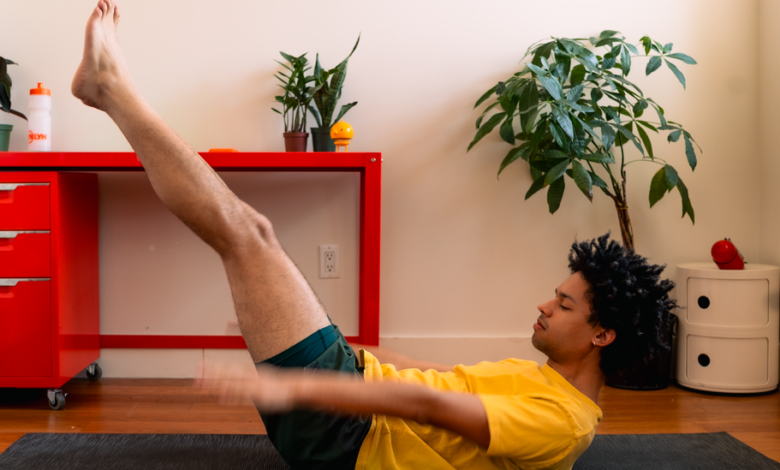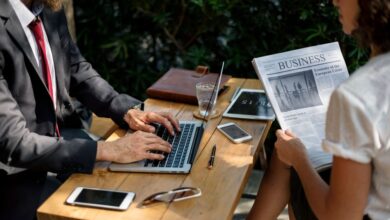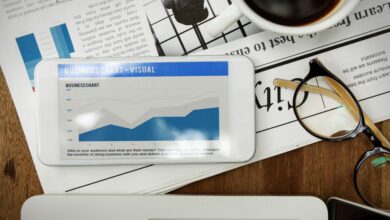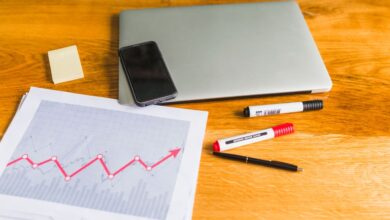A Pilates Routine You Can Do Anywhere in Under 10 Minutes

Pilates has been hugely popular for the last 10 years, and for good reason. But joining a studio with a professional instructor or buying home equipment is expensive, especially if you have never even tried the workouts. Fortunately, you can get many of the same benefits of studio-based Pilates at home with nothing more than a mat and your body.
Pilates, created during World War I under the name Contrology, is a method of exercise that involves low-impact movements done in a slow and controlled way, often using a wheeled platform called a reformer. The exercises can ease low back pain, build muscle and strengthen your core, especially as you recover from pregnancy.
A few small studies even suggest Pilates can help with cardiovascular health, though it’s best to do it alongside other workouts like weight lifting, running or walking, said Benjamin Gordon, a professor of applied physiology and kinesiology at the University of Florida.
But you don’t have to go to a studio or buy a Pilates machine to try it out. Studies suggest it’s possible to do it with just a mat and still see some benefits such as better posture, strength and flexibility along with lower blood pressure and reduced arthritis pain.
How to get started with Pilates at home
If you do choose to try Pilates on your own, “be mindful of how it makes your body feel,” said Allison MacKenzie, an exercise science instructor at the University of Connecticut and a certified Pilates instructor. “If you’re feeling pain in the neck or feeling pain in your lower back, then it’s probably an exercise that needs to be modified.”
Most experts agree that it’s best to start with an instructor — ideally one that has a certification from the Pilates Method Alliance — who can ensure you’re doing the moves correctly and won’t get hurt.
“For beginners, it’s especially important to understand the movements are all about control, versus using momentum,” said Ashley Goodwin, an exercise scientist at the Feinstein Institutes for Medical Research.
Here are a few moves you can do at home without any equipment. Try each exercise below for a 5- to 10-minute workout. Focus on form, not speed. Take rests as you need, but aim to eventually get through without one.
If one round through is too easy, try it two or three times, with short rests between rounds. Or go to the National Health Service of the United Kingdom for several guided Pilates workouts including those for chair-based Pilates and Pilates for people with arthritis, back pain and knee problems.
The one-leg circle
This is one of the safer moves you can do at home, Ms. MacKenzie said. It can help strengthen the muscles on either side of your abdomen that help you twist side to side, called obliques, and increases hip-joint mobility.
Start by lying on your back with your arms at your sides, knees bent and feet on the floor. As you exhale, lift one knee toward you so that your shin is parallel to the floor. Keeping your knee bent, start slowly make small circles. If your hip bones start to move, make the circles smaller. Continue for one minute on each side.
Make it more challenging with slightly larger circles or by straightening the lifted leg toward the ceiling. Over time, you can also try straightening the other leg so it’s flat on the floor.
The Pilates 100
One of the most classic Pilates movements, the Pilates 100 strengthens your deep abdominal muscles as well as your arms and legs. Be cautious trying it at home if you have back or neck pain.
Start by lying on your back with your arms at your sides, knees bent and feet on the floor. As you exhale, lift one leg, either with the knee bent or straight. Then start pulsing your arms up and down a few inches. Inhale for five pulses and exhale for five pulses. Switch legs. Repeat with each leg five times, until you reach 100 pulses.
If that doesn’t feel doable, simply leave both feet on the floor. Or, make it more challenging by lifting both legs together and holding them there for all 100 arm pulses. Or lift your head and shoulders off the mat and straighten your legs.
The swimming exercise
This move helps strengthen your shoulders and glutes while stabilizing your core and lower back.
Start on your hands and knees. Your hands should be under your shoulders and knees under your hips with your back flat and core engaged. As you exhale, stretch one arm forward and parallel with the floor, keeping your core stable. Inhale as you place your hand back under your shoulder. Next, exhale as you extend one leg out behind you, parallel to the floor, and inhale as you return your knee to the ground. Try three sets of 10 on each side.
Make it more challenging by lifting both your arm and the leg on your opposite side at the same time.
The cat stretch
This stretch, often used in both Pilates and yoga, can help reduce stiffness in your spine.
Start on all fours with your hands under your shoulders and knees under your hips. Slowly tuck your chin toward your chest and inhale as you round your upper back toward the ceiling. Start to untuck your chin and exhale as you look forward while letting your spine ease down toward the floor. Repeat 20 times.
Emma Yasinski is a freelance science journalist whose work has appeared in National Geographic, Undark and more.
Source link



